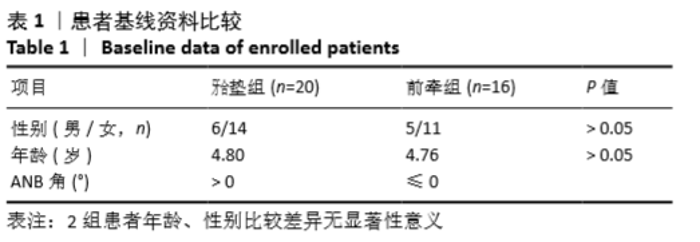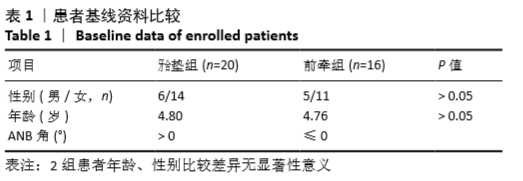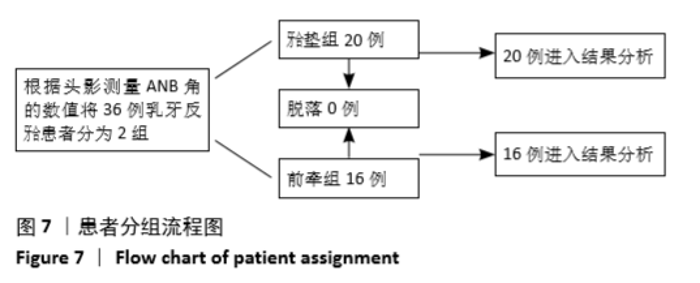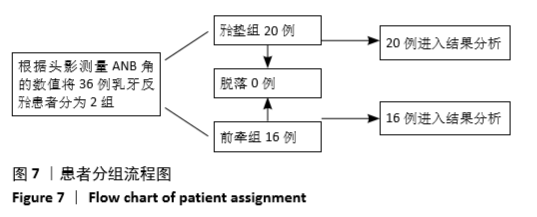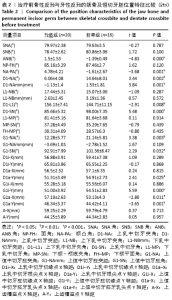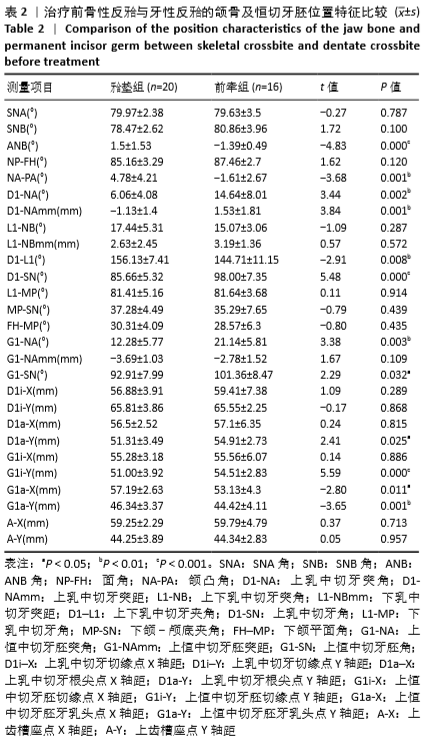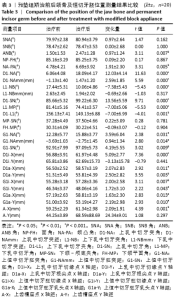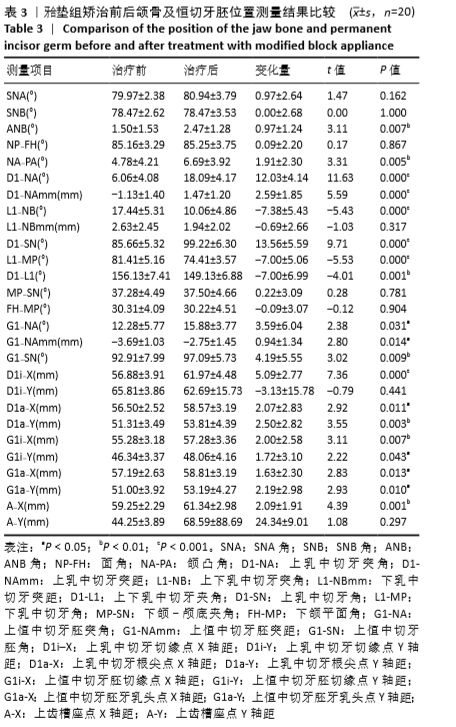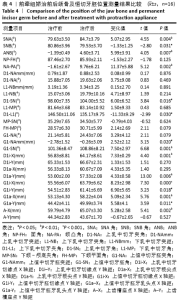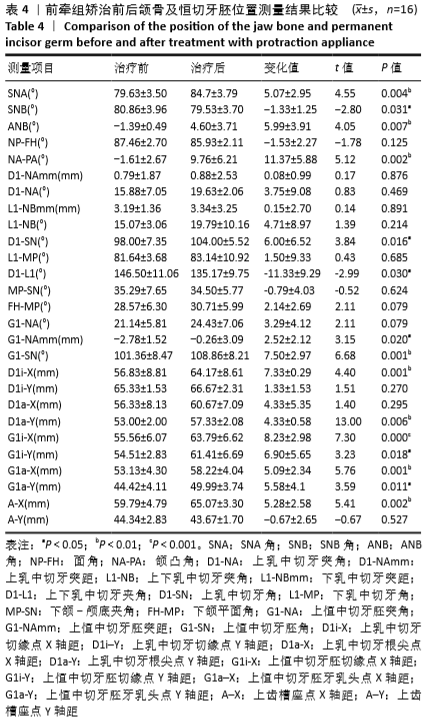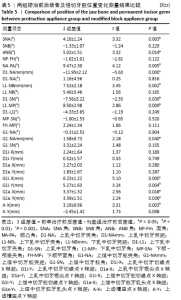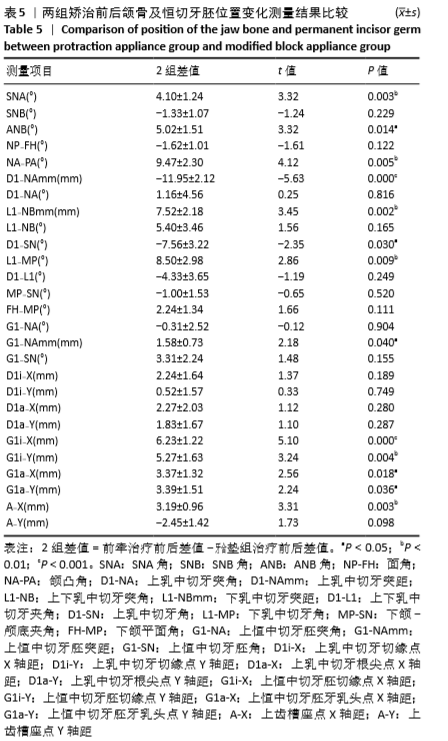[1] 王嘉艺,龚爱秀.舌栅联合牙合垫式矫治器矫治乳牙期前牙反牙合的疗效分析[J].南京医科大学学报(自然科学版),2020,40(3):421-425.
[2] JANG SJ, CHOI DS, JANG I, et al. Quantitative comparison of incisal tooth wear in patients receiving one-phase or two-phase treatment for skeletal Class III malocclusion with anterior crossbite. Angle Orthod. 2018;88(2):151-156.
[3] MIAMOTO CB, MARQUES LS, ABREU LG, et al. Comparison of two early treatment protocols for anterior dental crossbite in the mixed dentition: A randomized trial. Angle Orthod. 2018;88(2):144-150.
[4] SEIRYU M, IDA H, MAYAMA A, et al. A comparative assessment of orthodontic treatment outcomes of mild skeletal Class III malocclusion between facemask and facemask in combination with a miniscrew for anchorage in growing patients: A single-center, prospective randomized controlled trial. Angle Orthod. 2020;90(1):3-12.
[5] KANG TJ,EO SH,CHO HJ,et al.A sparse principal component analysis of Class III malocclusions. Angle Orthod. 2019;89(5):768-774.
[6] BACCETTI T, FRANCHI L, JAMES A, et al. Growth in the untreated class III subject. Semin Orthod. 2007;13:130-142.
[7] 华咏梅,石四箴.乳牙反牙合的调查与分析[J].口腔医学,2000,20(1): 43-44.
[8] DIMBERGA L, LENNARTSSONB B, ARNRUPC K, et al. Prevalence and change of malocclusions from primary to early permanent dentition: A longitudinal study. Angle Orthod. 2015;85(5):728-734.
[9] ORMISTON JP, HUANG GJ, LITTLE RM, et al. Retrospective analysis of long-term stable and unstable orthodontic treatment outcomes. Am J Orthod Dentofacial Orthop. 2005;128(5):568 -574.
[10] 石慧俊,曾祥龙,傅民魁.前牙反牙合矫治后的复发因素探讨[J].临床口腔医学杂志,1994,10(3):137-140.
[11] 左艳萍,刘亚非,刘听,等.应用微型扩弓器矫治乳牙反牙合的临床效果观察[J].中华口腔正畸学杂志,2016,23(2):85-88.
[12] 刘亚非,牛小雷,左艳萍. 改良牙合垫舌簧矫治器矫治乳牙反牙合的临床体会[J].现代口腔医学杂志,2008,22(4):344.
[13] BUSCHANG PH, GANDINI LG. Mandibular skeletal growth and modeling between 10 and 15 years of age. Eur J Orthod. 2002;24(1):69-79.
[14] BUSCHANG P. Santos-pinto. Condylar growth and glenoid fossa displacement during childhood and adolescence. Am J Orthod Dentofacial Orthop. 1998;113(4):437-442.
[15] 曾祥龙.乳前牙反牙合的计算机X线头影测量[J].口腔医学,1986, 6(1):20-23.
[16] TOLLARO I, BACCETTI T, BASSARELLI V, et al. Class III malocclusion in the deciduous dentition: a morphological and correlation study. Eur J Orthod. 1994;16(5):401-408.
[17] REYES BC, BACCETTI T, MCNAMARA JA. An Estimate of Craniofacial Growth in Class III Malocclu- sion.Angle Orthod. 2006;76(4):577-584.
[18] KWON JH, KIM JY, PARK K, et al. Cephalometric Characteristics of Korean Children with Class III Malocclusion in the Deciduous Dentition. Angle Orthod. 2010;80(1):86-90.
[19] BACCETTI T, REYES BC, MCNAMARA JA. Gender differences in Class III malocclusion. Angle Orthod. 2005;75(4):510-520.
[20] MIYAJIMA K, MCNAMARA JA, SANA M, et al. An estimation of craniofacial growth in the untreated Class III female with anterior crossbite. Am J Orthod Dentofacial Orthop. 1997;112(4):425-434.
[21] 谷岩.生长发育与前牙反牙合的正畸治疗[J].中华口腔正畸学杂志, 2009(1):54-56.
[22] TOLLARO I, BACCETTI T,FRANCHI L.Craniofacial changes induced by early functional treatment of Class III malocclusion. Am J Orthod Dentofacial Orthop. 1996;109(3):310-318.
[23] 冷军,段银钟,金军.矫治乳牙反牙合后上颌骨乳切牙恒切牙胚位置变化的研究[J].实用口腔医学杂志,1997,13(4):283-285.
[24] 孙嫱,刘英群,吕晶,等.矫治乳前牙反牙合对恒牙胚及颌骨位置变化影响的研究[J].口腔医学,2009;29(6):288-290.
[25] 蒋琳,刘进.功能调节器矫治乳前牙反牙合对恒切颌影响的头影测量研究[J].临床口腔医学杂志,2000,16(6):160-162.
[26] 金作林,林珠,李红.正畸移动狗乳磨牙对恒牙胚的影响[J].中华口腔医学杂志,2003,38(6):466.
[27] 李菲菲,丁寅,夏春鹏,等.犬下颌骨牵张成骨术后恒牙胚变化的实验研究[J].牙体牙髓牙周病学杂志,2003,13(4):186-188.
[28] 张娜,杨富生,王丽芳.TRAF6在犬乳恒牙替换阶段的表达[J].临床口腔医学杂志,2007,23(4):214-216.
|
